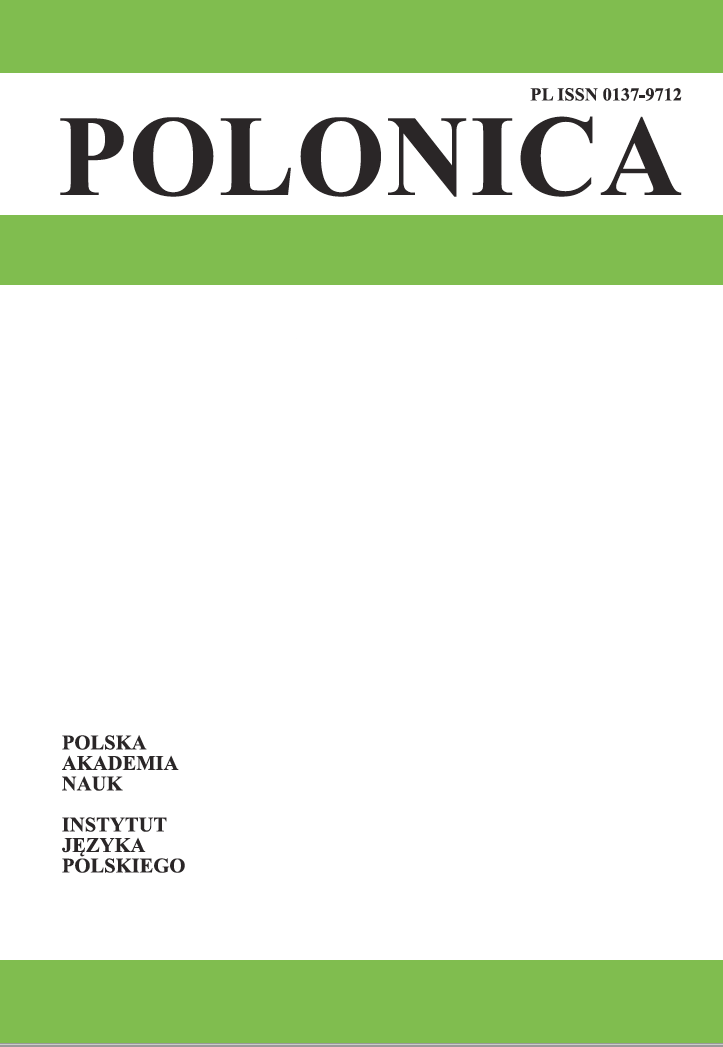Abstract
This article investigates if there is some distinctive way in which characters of Bolesław Prus novel “The Doll” are speaking. It is well known that author endowed his characters with diff erent social backgrounds, views, ethics. Literary critics often emphasized diff erences in vocabulary and numerous language stylizations among social classes, but in most of the cases only the most characteristic words were taken into con16 Jarosław Foltman sideration and function words (prepositions, conjunctions, personal pronouns and other) were omitted in the research. The aim of this study, in contrast to the previous, is to examine individual characters’ way of speaking by measuring frequencies of using most frequent words and given parts of speech. Tests have been performed using the Delta method with a couple of data visualization techniques. The results show some signifi cant variations in individual idiolects.
References
Armagon S., 2008, Interpreting Burrows’s Delta: Geometric and Probabilistic Foundations, Literary and Linguistic Computing 23, s. 131–147.
Bachórz J., 1998, Wstęp, [w:] B. Prus, Lalka, Wrocław–Warszawa–KrakówBaayen R.H., 2008, Analyzing linguistic data. A practical introduction to statistics, Cambridge.
Baayen R.H., 2008, Analyzing linguistic data. A practical introduction to statistics, Cambridge.
Budrewicz T., 1990, „Lalka”. Konteksty stylu, Kraków.
Burrows J.F., 1987, Computation into Criticism: A Study of Jane Austen’s Novels and an Experiment in Method, Oxford
— 2002, “Delta”: A Measure of Stylistic Diff erence and a Guide to Likely Authorship, Literary and Linguistic Computing 17, s. 267–287.
Eder M., 2011, Style-markers in authorship attribution: A cross-language study of the authorial fi ngerprint, Studies in Polish Linguistics 6, s. 99–114.
— 2014, Does size matter? Authorship attribution, small samples, big problem, Literary and Linguistic Computing, Volume 30, Issue 2, s. 167–182.
— 2017, Short samples in authorship attribution: a new approach, Digital Humanities 2017: Conference Abstracts, s. 221–224.
Eder M., Rybicki J., 2011, Stylometry with R, Digital Humanities 2011: Conference Abstracts, s. 308–311.
— 2013, Do birds of a feather really flock together, or how to choose test samples for authorship attribution, Literary and Linguistic Computing 28, s. 221–228.
Herrmann J.B., Van Dalen-Oskam K.H., Schöch Ch., 2015, Revisiting style, a key concept inliterary studies, Journal of Literary Theory 9, s. 25–52.
Hoover D.L., 2002, Frequent Word Sequences and Statistical Stylistics, Literary and Linguistic Computing 17, s. 157–180.
— 2004, Delta Prime?, Literary and Linguistic Computing 19, s. 477–495. Jannidis F., Pielström S., Schöch Ch., Vitt T., 2015, Improving Burrows’ Delta — An empirical evaluation of text distance measures, Digital Humanities 2015: Conference Abstracts.
Kurkowska H., 1948, O języku „Lalki” Prusa, Poradnik Językowy, z. 1, s. 2–8.
Levshina N., 2015, How to do Linguistics with R. Data exploration and statistical analysis, Amsterdam/ Philadelfi a.
Rybicki J., 1997/1998, Stylometria komputerowa w służbie tłumacza, Rocznik Przekładoznawczy, nr 3/4, s. 171–181.
— 2007, Twelve Hamlets: a stylometric analysis of major character’s idiolects in three English versions and nine translations, Digital Humanities 2007: Conference Abstracts, s. 191–192.
